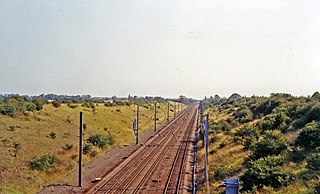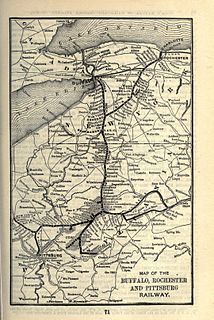This is a list of railway industry occupations, but it also includes transient functional job titles according to activity.
Contents
- By sector
- Engineering
- Station
- Revenue
- Operations
- Management
- Maintenance of way
- Alphabetical
- B
- C
- D
- E
- F
- G
- L
- P
- R
- S
- T
This is a list of railway industry occupations, but it also includes transient functional job titles according to activity.
Geotechnical Engineer

A conductor or guard is a train crew member responsible for operational and safety duties that do not involve actual operation of the train/locomotive. The conductor title is most common in North American railway operations, but the role is common worldwide under various job titles. In Commonwealth English, a conductor is also known as guard or train manager.

The London and North Eastern Railway (LNER) was the second largest of the "Big Four" railway companies created by the Railways Act 1921 in Britain. It operated from 1 January 1923 until nationalisation on 1 January 1948. At that time, it was divided into the new British Railways' Eastern Region, North Eastern Region, and partially the Scottish Region.
Rail transport operations are the day-to-day operations of a railway. A railway has two major components: the infrastructure and the rolling stock
Chief mechanical engineer and locomotive superintendent are titles applied by British, Australian, and New Zealand railway companies to the person ultimately responsible to the board of the company for the building and maintaining of the locomotives and rolling stock. In Britain, the post of locomotive superintendent was introduced in the late 1830s, and chief mechanical engineer in 1886.
Matthew Kirtley was born at Tanfield, Durham. He was an important early locomotive engineer.

Richard Edward Lloyd Maunsell held the post of chief mechanical engineer (CME) of the South Eastern and Chatham Railway from 1913 until the 1923 Grouping and then the post of CME of the Southern Railway in England until 1937. He had previously worked his way up through positions in other railways in Ireland, England and India.

The Abermule train collision was a head-on collision which occurred at Abermule, Montgomeryshire, Wales on 26 January 1921, killing 17 people. The crash arose from misunderstandings between staff which effectively over-rode the safe operation of the Electric Train Tablet system protecting the single line. A train departed carrying the wrong tablet for the section it was entering and collided with a train coming the other way.

The London Midland and Scottish Railway (LMS) Fowler Class 4F is a class of 0-6-0 steam locomotive designed for medium freight work. They represent the ultimate development of Midland Railway's six coupled tender engines. Many trainspotters knew them as "Duck Sixes", a nickname derived from their wheel arrangement.

The Stéblová train disaster was a railway accident that occurred on 14 November 1960 at 17:42 CET on a single-track railway in Stéblová in Eastern Bohemia, Czechoslovakia. At 17:42 CET, a passenger steam train 608 traveling at a speed of 55 km/h abreast collided with a diesel railcar 653 traveling at a speed of 60 km/h. 118 people died as a result of the accident and 110 were badly injured. It was the most tragic accident in the history of Czech railway transport.

Over the latter years of the 19th and early years of the 20th centuries, Penistone in Yorkshire gained a name as an accident black-spot on Britain's railway network; indeed, it could be said to hold the title of the worst accident black-spot in the country. The main line through the town was the Woodhead route of the Manchester, Sheffield and Lincolnshire Railway between Sheffield Victoria and Manchester, London Road. The line was heavily graded with a summit some 400 yards inside the eastern portal of the Woodhead tunnel.

The Abbots Ripton rail disaster occurred on 21 January 1876 at Abbots Ripton, then in the county of Huntingdonshire, England, on the Great Northern Railway main line, previously thought to be exemplary for railway safety. In the accident, the Special Scotch Express train from Edinburgh to London was involved in a collision, during a blizzard, with a coal train. An express travelling in the other direction then ran into the wreckage. The initial accident was caused by:

A Bahnbetriebswerk is a German railway depot where the maintenance of locomotives and other rolling stock is carried out. It is roughly equivalent to a locomotive shed, running shed or motive power depot. These were of great importance during the steam locomotive era to ensure the smooth running of locomotive-hauled services. Bahnbetriebswerke had a large number of facilities in order to be able to carry out their various maintenance tasks. As a result, they needed a lot of staff and were often the largest employers in the area.

The Buffalo, Rochester and Pittsburgh Railway was one of the more than ten thousand railroad companies founded in North America. It lasted much longer than most, serving communities from the shore of Lake Ontario to the center of western Pennsylvania.

Witham railway station was the scene of a serious accident on Friday, 1 September 1905.

The South African Railways Class 10A 4-6-2 of 1910 was a steam locomotive from the pre-Union era in Transvaal.

The Cape Government Railways Fairlie 0-6-0+0-6-0 of 1876 was a South African steam locomotive from the pre-Union era in the Cape of Good Hope.
The 1958 Sterlington Railroad Disaster was a head-on collision by two Erie Railroad trains on August 11, 1958 at 6:47 AM killing 5 people and injuring 22 to 36. The collision occurred when the operator in the signal tower at Suffern failed to hold the westbound train No. 53 at Suffern for the eastbound No. 50 commuter train from Monroe, New York, to Hoboken, New Jersey. When he realized his error, he attempted to contact the crews via radio but was unsuccessful due to a radio dead spot. The trains impacted head-on right in front of the abandoned Erie Railroad Sterlington railroad depot in Sterlington, New York near Sloatsburg, killing the crew of the locomotive No. 859 from train No.50 as well as two passengers and injuring the crew of the locomotive No. 1402 from the westbound train.